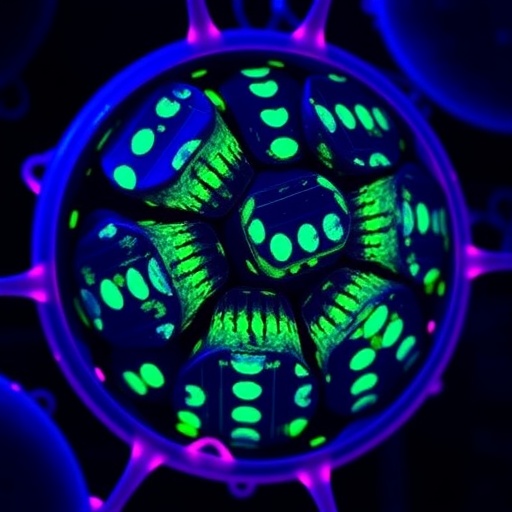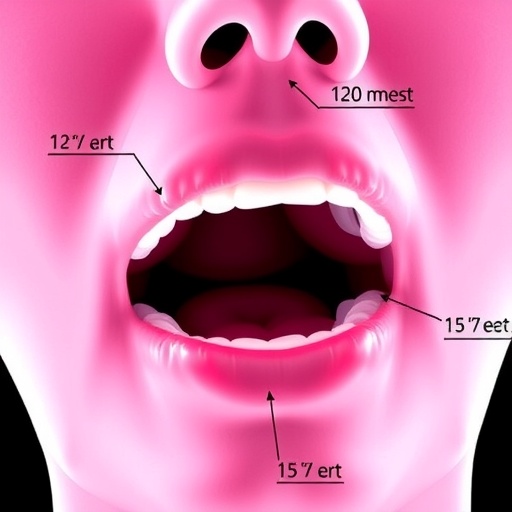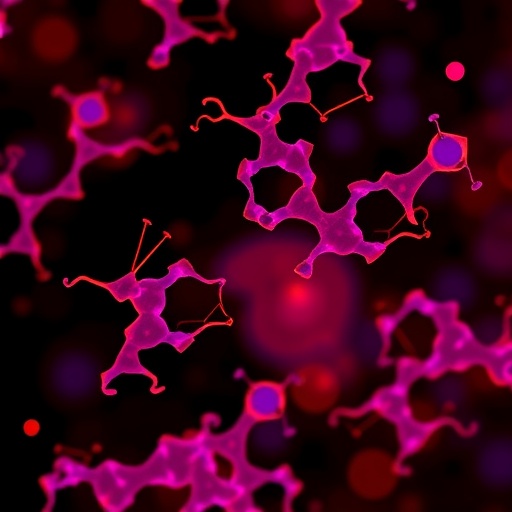In the relentless pursuit of combating gastric cancer, a disease notorious for its high mortality and global prevalence, new molecular insights are emerging that may revolutionize existing therapeutic strategies. Recent groundbreaking research led by Li, Chen, Zhao, and colleagues at BMC Cancer has spotlighted the CD2 Associated Protein (CD2AP) as a pivotal player in modulating the tumor microenvironment (TME) and enhancing immunotherapy efficacy in stomach adenocarcinoma (STAD). This study delves deep into the complexities of tumor biology, revealing the intricate interplay between CD2AP expression and immune landscape dynamics within the gastric TME, suggesting promising avenues for targeted molecular treatments.
Gastric cancer remains the fifth most frequently diagnosed malignancy worldwide and ranks fourth in its contribution to cancer-related deaths, underscoring the dire need for innovative interventions. Immunotherapy has heralded new hope in various cancers by harnessing the immune system to recognize and destroy malignant cells. However, the heterogeneous nature of the TME in gastric cancer poses significant challenges, often dampening immune responses and limiting therapeutic outcomes. Understanding the molecular underpinnings that shape this environment is crucial, and CD2AP has now been thrust into the spotlight as a key regulator.
CD2AP is traditionally known for its role in cytoskeletal organization and cell signaling, but its involvement in cancer immunology remained ambiguous until now. Utilizing comprehensive RNA sequencing data from The Cancer Genome Atlas (TCGA), the research team conducted a pan-cancer analysis, meticulously profiling CD2AP expression across multiple malignancies. Remarkably, CD2AP expression was found upregulated within the stromal compartments of various tumors, hinting at a conserved role in TME architecture and immune modulation.
Focusing specifically on stomach adenocarcinoma, the researchers employed robust bioinformatics pipelines to dissect the association between CD2AP levels and critical immunological features. These included the elaborate cancer immunity cycle stages, expression patterns of immune checkpoint molecules, immunomodulatory factors, and the prevalence of tumor-infiltrating immune cells (TIICs). This multi-dimensional analysis illuminated how CD2AP correlates with a ‘stromal reduced’ TME—a microenvironment characterized by diminished stromal content but potentially heightened immune cell activity.
This ‘stromal reduced’ milieu correlated positively with enhanced immunotherapy responsiveness, positioning CD2AP not merely as a bystander but as an active contributor to shaping the immune contexture that favors therapeutic success. Patients exhibiting elevated CD2AP expression concurrently showed increased markers such as CD4, CD20, and CD57, each reflecting pivotal immune subsets including helper T cells, B cells, and natural killer cells respectively. This triad of high immune marker expression combined with CD2AP abundance was associated with improved prognosis and survival outcomes.
To translate these findings into clinical utility, the study ventured into prognostic modeling by constructing an immune-related risk score (IRS) that integrates CD2AP expression with other immune parameters. The IRS demonstrated robust predictive capability for patient outcomes in STAD, potentially guiding personalized medicine approaches. This score empowers oncologists to stratify patients according to their immunological and molecular tumor profiles, refining treatment strategies to maximize immunotherapeutic efficacy.
The molecular mechanisms by which CD2AP influences the stromal composition and immune cell infiltration within the TME are of particular interest. Although fully elucidating this requires further investigation, initial data suggest CD2AP modulates signaling pathways that regulate stromal cell activation and extracellular matrix deposition. By limiting excessive stromal expansion, CD2AP helps create a microenvironment that permits better immune cell penetration and function, a prerequisite for effective immune-mediated tumor eradication.
Moreover, CD2AP’s interplay with immune checkpoints and immunomodulators hints at a regulatory nexus where it could modulate the delicate balance between immune tolerance and activation within the tumor. This balance is critical for immunotherapy success, as immune evasion remains a hallmark of gastric cancer. Targeting CD2AP-related pathways could, therefore, synergize with existing checkpoint inhibitors, offering a combinatorial therapeutic strategy that enhances antitumor immunity while overcoming resistance mechanisms.
This research also spotlights the heterogeneity within gastric tumors, which often confounds treatment responses. By characterizing the tumor’s stromal and immune architecture through the lens of CD2AP expression, the study provides a refined understanding of tumor biology. It underscores the importance of considering the spatial and molecular context of tumors, which may explain why some patients respond remarkably well to immunotherapy while others do not.
Beyond its prognostic and therapeutic implications, CD2AP emerges as a promising biomarker for gastric cancer, aiding in early diagnosis, risk assessment, and monitoring treatment response. Biomarkers that reflect both tumor intrinsic features and the surrounding immune milieu are invaluable, as they offer a holistic view of disease state and progression. Incorporating CD2AP measurement into routine clinical workflows could transform patient management paradigms.
It is important to note that while the study leans heavily on bioinformatic analyses using large genomic datasets, subsequent experimental validations and clinical trials are warranted to fully establish CD2AP’s role and therapeutic potential. Investigations into its functional mechanisms at the cellular and molecular levels will unravel how modulating CD2AP expression influences TME remodeling and immune activation in vivo.
The broader implications of these findings extend beyond gastric cancer. Given CD2AP’s conserved expression patterns and its involvement in the immune microenvironment of multiple cancer types, it could represent a universal target for enhancing immunotherapy across malignancies. This opens exciting possibilities for cross-cancer therapeutic strategies leveraging CD2AP modulation.
In conclusion, the identification of CD2AP as a modulator of the stromal reduced tumor microenvironment and as a facilitator of immunotherapy response marks a significant advancement in gastric cancer research. This discovery not only enriches our molecular understanding of tumor-immune interactions but also paves the way for novel diagnostic and therapeutic innovations aimed at improving patient outcomes in this devastating disease.
As the oncology community eagerly anticipates further developments, the integration of CD2AP-related molecular insights into clinical practice holds the promise of transforming how gastric cancer is diagnosed, treated, and ultimately conquered.
Subject of Research: Gastric cancer tumor microenvironment and immunotherapy modulation via CD2AP
Article Title: CD2AP shapes a stromal reduced tumor microenvironment and contributes to immunotherapy in gastric cancer
Article References:
Li, H., Chen, H., Zhao, T. et al. CD2AP shapes a stromal reduced tumor microenvironment and contributes to immunotherapy in gastric cancer. BMC Cancer 25, 910 (2025). https://doi.org/10.1186/s12885-025-14248-z
Image Credits: Scienmag.com
DOI: https://doi.org/10.1186/s12885-025-14248-z
Tags: BMC Cancer research on CD2APcancer-related mortality and gastric cancerCD2AP and tumor biologyCD2AP expression and immune landscapeCD2AP role in tumor microenvironmentenhancing immune response in cancergastric cancer immunotherapyimmunotherapy challenges in gastric cancerinnovative interventions for gastric cancermolecular treatments for stomach adenocarcinomatargeted therapies for gastric malignanciesUnderstanding tumor microenvironment dynamics





